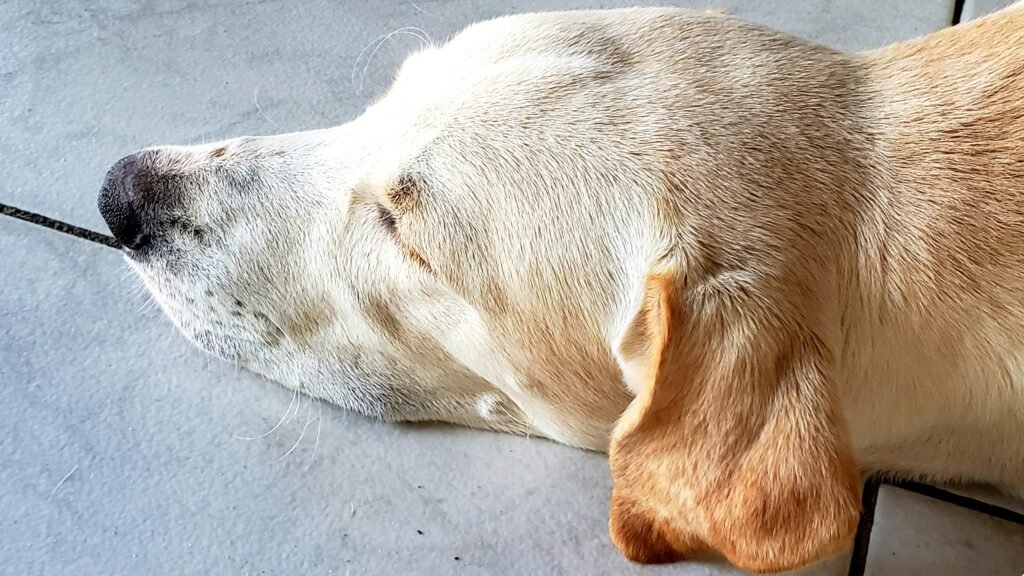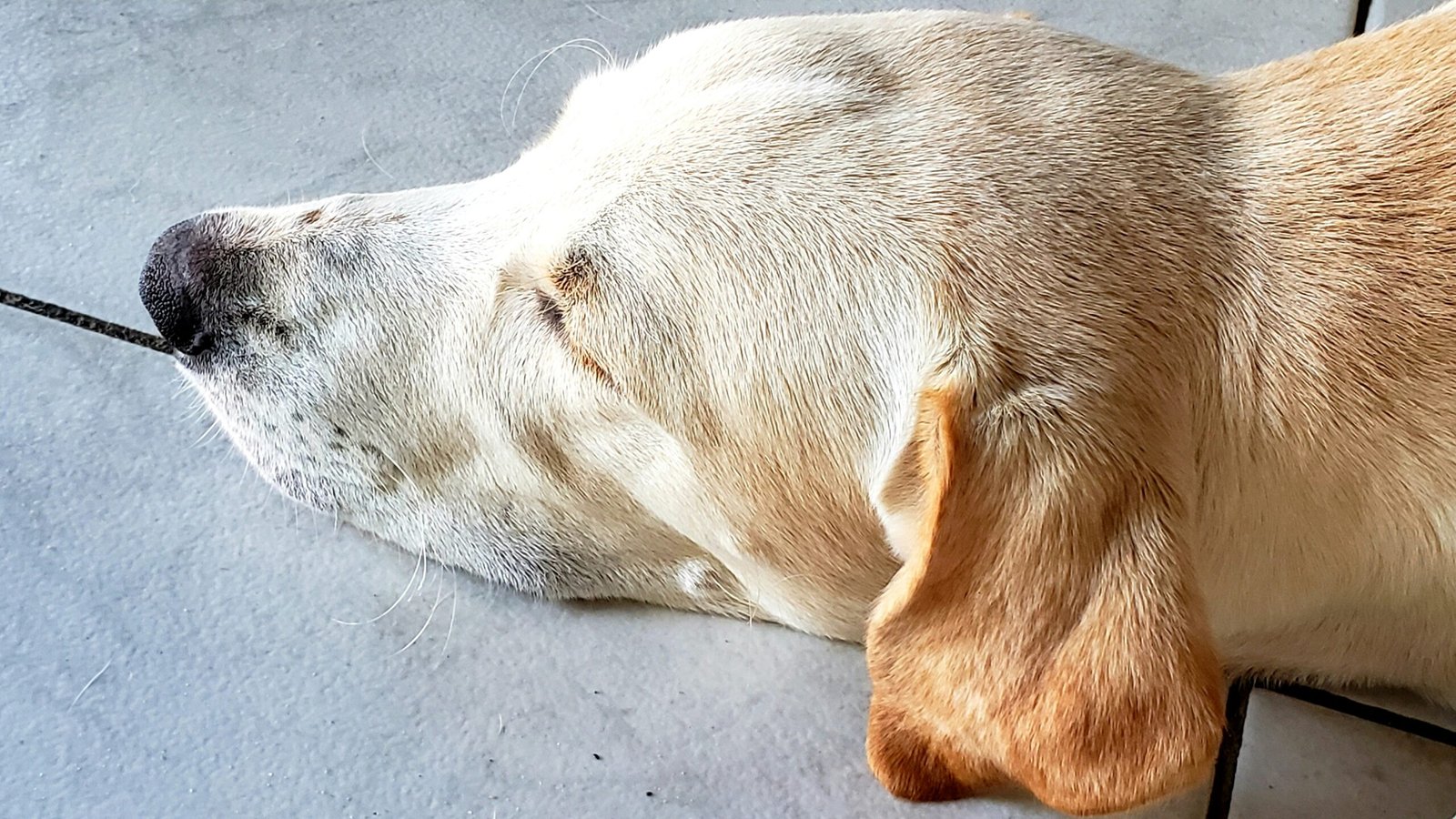Why Is My Female Dog Whining So Much? Understanding Your Pup’s Needs
If you’ve ever found yourself asking, “Why is my female dog whining so much?” you’re not alone. Dogs communicate in many ways, and whining is one of their most common methods of expressing emotions or needs. While some whining is normal, excessive vocalization can leave pet parents feeling confused, frustrated, or even concerned about their dog’s well-being. In this blog post, we’ll explore the reasons behind your female dog’s whining, from physical discomfort to emotional distress. By understanding the root causes, you’ll be better equipped to address her needs and create a calmer, happier environment for both of you.
Common Reasons Why Your Female Dog Might Be Whining
Whining is often your dog’s way of telling you something important. Here are some of the most common reasons why your female dog might be whining excessively:
Attention-Seeking Behavior
Dogs crave interaction, and whining can be their way of asking for attention, whether it’s playtime, affection, or simply acknowledgment.Separation Anxiety
Many dogs experience stress when left alone, leading to whining as a way to express their unease or loneliness.Physical Discomfort or Pain
If your dog is unwell or injured, whining can signal that she’s in pain or feeling uncomfortable.Excitement Over Anticipation
Some dogs whine out of excitement, especially when they sense something fun is about to happen, like going for a walk or receiving a treat.Hormonal Changes During Heat Cycles
Female dogs may whine more frequently during their heat cycle due to hormonal fluctuations and the urge to mate.
Understanding these potential triggers can help you identify the underlying cause of your dog’s whining. Once you know why she’s vocalizing, you can take steps to address her specific needs.
How to Identify the Cause of Your Dog’s Whining
Pinpointing the exact reason behind your female dog’s whining requires observation and patience. Here are some practical tips to help you decode her behavior:
Observe Timing and Context
Take note of when and where your dog whines. Is it during mealtime, when you leave the house, or at night? Context clues can reveal patterns.Check for Signs of Illness
Look for additional symptoms like lethargy, limping, or changes in appetite, which could indicate an underlying health issue.Evaluate Recent Changes
Has there been a recent change in routine, environment, or household dynamics? Dogs are sensitive to disruptions, which can lead to increased whining.Monitor Her Body Language
Pay attention to her posture, tail position, and facial expressions. These non-verbal cues can provide insight into her emotional state.Consider Her Age
Puppies often whine more as they adjust to new environments, while senior dogs may whine due to age-related conditions like arthritis or cognitive decline.
By carefully observing your dog’s behavior and circumstances, you can narrow down the possible causes of her whining and respond appropriately.
Check this guide 👉Why Is My Dog Whining in the Crate? Best 7 Expert Tips!
Check this guide 👉How to Get a Dog to Stop Whining: Best 7 Expert Tips!

Possible Cause of Whining | Signs to Watch For |
|---|---|
Attention-Seeking | Whining stops when you interact |
Separation Anxiety | Whining starts when you prepare to leave |
Physical Discomfort | Limping, panting, or lack of energy |
Excitement | Tail wagging, jumping, or pacing |
Hormonal Changes | Restlessness, frequent licking |
Tips to Address Excessive Whining in Female Dogs
Once you’ve identified the cause of your dog’s whining, it’s time to take action. Here are some expert-recommended strategies to help reduce excessive vocalization:
Provide Mental Stimulation
Boredom is a common cause of whining. Puzzle toys, interactive games, and training sessions can keep your dog mentally engaged.Establish a Routine
Dogs thrive on consistency. A predictable daily schedule can reduce anxiety and minimize unnecessary whining.Address Separation Anxiety
Gradually desensitize your dog to being alone by practicing short departures and rewarding calm behavior.Visit the Vet
If you suspect your dog is in pain or unwell, schedule a vet visit to rule out medical issues.Use Positive Reinforcement
Reward quiet behavior with treats or praise to encourage your dog to remain calm instead of whining for attention.
By implementing these tips, you can help your dog feel more secure and reduce her need to whine excessively.
Preventing Future Whining Episodes
Prevention is always better than cure. Here are some proactive steps you can take to minimize future whining episodes:
Socialize Your Dog Early
Proper socialization helps dogs feel more confident in various situations, reducing anxiety-related whining.Spay Your Dog (If Appropriate)
Spaying can eliminate hormonal whining associated with heat cycles, though it’s essential to consult your vet first.Create a Calming Environment
Use calming aids like pheromone diffusers or soft music to soothe your dog during stressful times.Teach the “Quiet” Command
Training your dog to stop whining on command can give you more control over her vocalizations.Ensure Adequate Exercise
A tired dog is less likely to whine out of boredom or frustration. Regular walks and playtime can make a big difference.
Taking these preventive measures can help ensure that your dog remains happy, healthy, and less prone to excessive whining.
Signs Your Dog’s Whining Requires Immediate Attention
While some whining is normal, certain behaviors may indicate a more serious issue that requires prompt attention. Here are signs to watch for:
Whining Accompanied by Limping
If your dog is whining and favoring one leg, it could signal an injury or joint problem like arthritis.Persistent Whining Without Obvious Cause
Continuous whining without any clear trigger might suggest internal pain or discomfort that needs veterinary evaluation.Changes in Eating or Drinking Habits
Whining combined with a refusal to eat or drink can indicate illness or gastrointestinal issues.Excessive Pacing or Restlessness
If your dog is whining while pacing nonstop, it could point to anxiety, discomfort, or even bloat—a potentially life-threatening condition.Whining During Bathroom Attempts
Struggling to urinate or defecate while whining may indicate a urinary tract infection, blockage, or other medical concerns.
If you notice any of these signs, it’s crucial to consult your veterinarian promptly. Addressing potential health issues early can prevent complications and ensure your dog’s well-being.
How to Comfort a Whining Dog During Stressful Situations
Stressful situations, such as storms or loud noises, can cause your female dog to whine excessively. Here’s how you can comfort her during these times:
Create a Safe Space
Set up a cozy, enclosed area like a crate or a quiet room where your dog can retreat when feeling overwhelmed.Use Calming Tools
Items like weighted blankets or anxiety wraps can provide soothing pressure that helps calm your dog.Distract with Toys or Treats
Engage your dog with interactive toys or puzzle feeders to divert her attention from the stressful situation.Stay Calm Yourself
Dogs pick up on their owner’s emotions. Remaining calm and composed can help reassure your dog that everything is okay.Introduce White Noise
Playing soft music or white noise can mask unsettling sounds and create a more peaceful environment.
By taking these steps, you can help your dog feel safer and reduce her need to whine during stressful events. Remember, patience and consistency are key to building her confidence over time.
Training Techniques to Reduce Attention-Seeking Whining
Attention-seeking whining can be frustrating, but with consistent training, you can teach your dog healthier ways to communicate. Here are effective techniques to try:
Ignore the Whining Completely
Avoid making eye contact, speaking, or touching your dog while she’s whining. Reward her only when she’s quiet.Teach the “Speak” and “Quiet” Commands
Train your dog to bark or whine on command (“speak”) and then immediately stop when you say “quiet.” This gives you greater control over her vocalizations.Reward Calm Behavior
Offer treats, praise, or affection when your dog remains quiet, reinforcing that calmness gets positive attention.Redirect with Tasks
Ask your dog to perform simple commands like “sit” or “lie down” to redirect her focus and discourage whining.Set Clear Boundaries
Establish rules about when and where your dog can seek attention. Consistency helps her understand what behaviors are acceptable.
Training takes time and patience, but with persistence, you can curb attention-seeking whining and foster a quieter, more harmonious relationship with your dog.
Frequently Asked Questions About Female Dog Whining
Is whining normal for female dogs?
Yes, whining is a natural form of communication for dogs, but excessive whining may indicate an underlying issue.
Can spaying reduce whining?
Spaying can reduce hormonal whining related to heat cycles, but it won’t eliminate whining caused by other factors.
Should I ignore my dog when she whines?
Ignoring attention-seeking whining can discourage the behavior, but it’s important to address other types of whining promptly.
How do I know if my dog is in pain?
Look for signs like limping, excessive licking, or changes in behavior. If unsure, consult your veterinarian.
Can older dogs whine more as they age?
Yes, senior dogs may whine due to age-related conditions like arthritis or cognitive dysfunction.
Final Thoughts: Supporting Your Whining Female Dog
Excessive whining can be frustrating, but it’s important to remember that your female dog is trying to communicate with you. Whether she’s seeking attention, experiencing discomfort, or simply feeling anxious, understanding her needs is the first step toward resolving the issue. By observing her behavior, addressing potential causes, and implementing practical solutions, you can create a harmonious environment where both you and your pup feel content. With patience, consistency, and care, you’ll soon see a reduction in her whining—and maybe even a few more peaceful moments in your day!
Cat Fever Treatment: Best 7 Expert Tips! Discover expert advice on identifying, managing, and treating fever in cats to ensure their quick recovery and well-being.
Understanding Meloxicam for Cats: Best 7 Expert Tips! Learn how to safely administer meloxicam, manage side effects, and ensure your cat's comfort with expert advice on feline pain relief.
Amoxicillin for Cat UTI: Best 7 Expert Tips! Discover safe usage, dosage guidelines, and expert advice on treating feline urinary tract infections effectively with amoxicillin.
Understanding Cat Cancer Treatment: Best 7 Expert Tips! Discover expert advice on managing feline cancer, from early detection to treatment options, ensuring your cat’s health and comfort.





